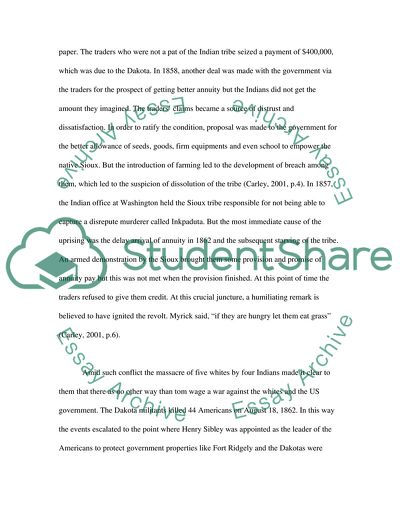Cite this document
(The Sioux Uprising of 1862 Research Paper Example | Topics and Well Written Essays - 1500 words, n.d.)
The Sioux Uprising of 1862 Research Paper Example | Topics and Well Written Essays - 1500 words. Retrieved from https://studentshare.org/history/1740944-the-justice-consequences-of-the-sioux-uprising-of-1862-in-minnesota
The Sioux Uprising of 1862 Research Paper Example | Topics and Well Written Essays - 1500 words. Retrieved from https://studentshare.org/history/1740944-the-justice-consequences-of-the-sioux-uprising-of-1862-in-minnesota
(The Sioux Uprising of 1862 Research Paper Example | Topics and Well Written Essays - 1500 Words)
The Sioux Uprising of 1862 Research Paper Example | Topics and Well Written Essays - 1500 Words. https://studentshare.org/history/1740944-the-justice-consequences-of-the-sioux-uprising-of-1862-in-minnesota.
The Sioux Uprising of 1862 Research Paper Example | Topics and Well Written Essays - 1500 Words. https://studentshare.org/history/1740944-the-justice-consequences-of-the-sioux-uprising-of-1862-in-minnesota.
“The Sioux Uprising of 1862 Research Paper Example | Topics and Well Written Essays - 1500 Words”, n.d. https://studentshare.org/history/1740944-the-justice-consequences-of-the-sioux-uprising-of-1862-in-minnesota.


